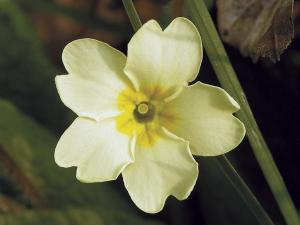Primrose can bring color inside all winter
At the beginning of winter weather it’s nice to think of spring in the garden. Because it is one of the first plants to bloom in the spring the bright flowers were called primrose from Old French and Medieval Latin “prima rosa,” literally “first rose,” today known as primrose.
Luckily, not all primrose wait until spring to bloom, and one primrose, the Cape Primrose, makes a wonderful blooming indoor winter plant. Not a true primrose, these bright flowers also go by the botanical name streptocarpus or twisted fruit, because of their twisted seed pods. The five-petaled blossoms are two inches wide and nearly tube-shaped. They look very much like orchids atop their six-inch flower stalks. The leaves are thick with a furry appearance much like their relatives the African violets. Best of all, Streptocarpus blooms almost constantly throughout the year.
Some popular cultivars are Hera (maroon with white picotee), Elizabeth (an old-fashioned dusty rose) Sirius (purple with white picotee) and the shocking deep crimson Candy Apple Red.
They also make wonderful long-lasting cut flowers.
Originally from wooded mountains, they do not need direct sunshine, so they are ideal for an east- or west-facing window. Luckily they can put up with less-than-ideal conditions, and will flower even in dimmer light.
Pot them up in ordinary potting soil. For added drainage you can add up to one-quarter perlite or peat moss.
Be sure the pots have a drainage hole so any extra water will stay away from the roots. Otherwise the plants can rot. In fact, overwatering is what tends to kill these African natives. Never let water accumulate in the saucer under the pot as the plant can wick the moisture back into the soil.
Too much water has the same effect on the plant as too little water; the plant wilts and dies. Water them only when the soil is dry to the touch. Streptocarpus are nearly free from diseases and pests.
To encourage re-blooming, pinch off any dead flowers or leaves.
Once spring hits in March or April you can water a little more, and add a good liquid fertilizer meant for flowering plants. Fertilizers with too much nitrogen will produce lots of leaves, but fewer flowers.
Keep the plants pot bound and only move them to the next larger size when repotting. Unless you want to collect seed, cut off any seed pods as they appear to encourage more blooms.
You can grow streptocarpus from seed. Because they need light to germinate, simply scatter the tiny dust-like seeds on top of the potting soil. Water carefully from the bottom
You can easily propagate them through leaf cuttings. Choose a large healthy leaf and cut it down the center. Carefully cut out and remove the leaf rib. Stand the leaf pieces upright in moist potting mix soil. Because the leaves contain natural root stimulants you do not need to treat the cuttings with rooting hormone. Cover the newly planted cuttings with a loose plastic bag to retain moisture, then set them out of direct sunlight. Soon new plants will spring from the base of the leaves.
Streptocarpus are widely available in garden centers, nurseries and even supermarkets. Wider selections are found at mail order growers such as Lyndon Lyon Greenhouse (www.lyndonlyon.com).
When it’s bleak and gloomy outside, your indoor Streptocarpus will provide a bit of African cheer until the true outdoor primroses bloom. You can’t escape winter, but you can drift off to a sunny mountainside as you listen to country singer Jerry Wallace sing “Primrose Lane.”


















































